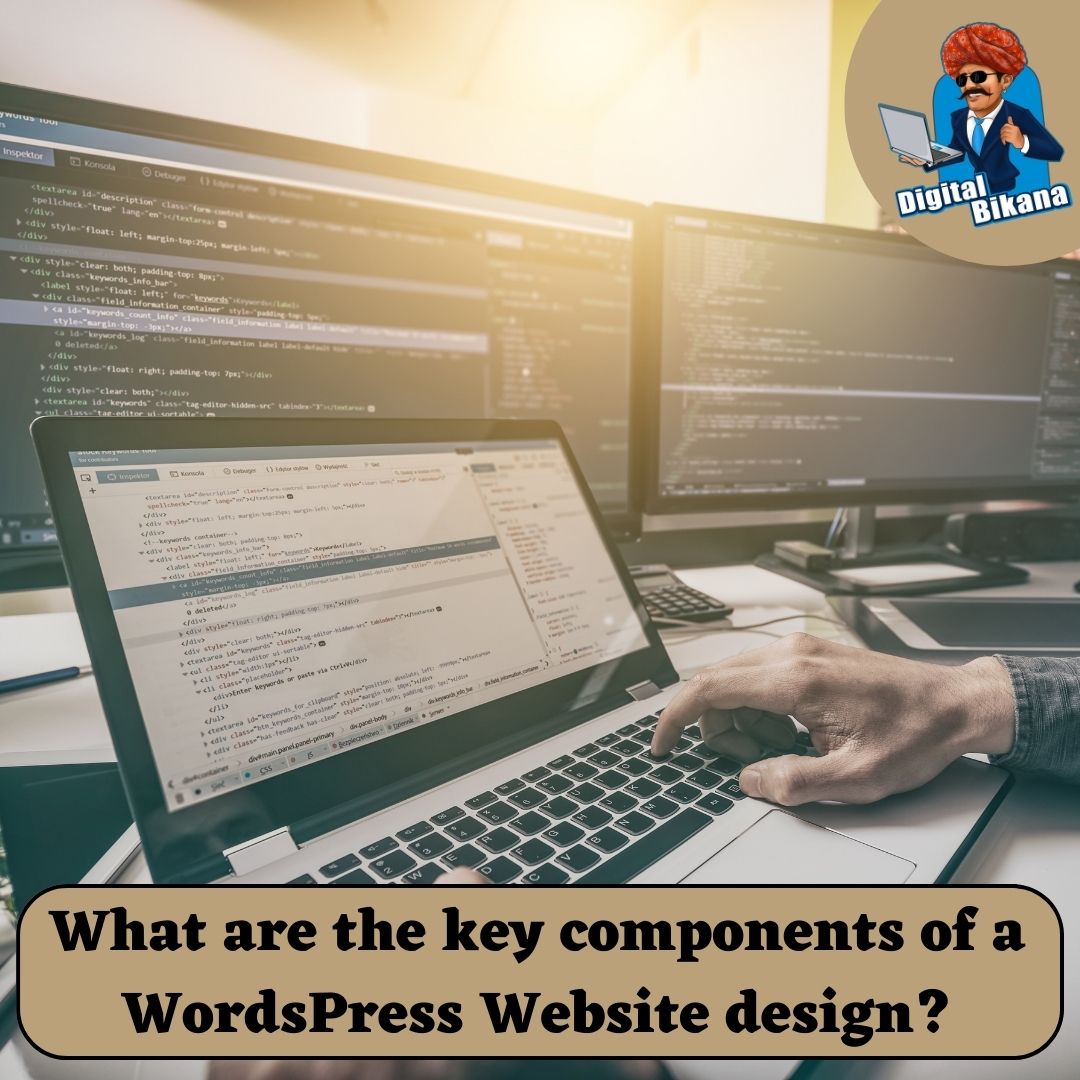What are the key components of a WordPress website design?
In this article we are going to talk about What are the key components of a WordPress website design? In the digital age, having a well-designed website is essential for businesses and individuals alike. WordPress, a widely used content management system, offers a versatile platform for creating dynamic and visually appealing websites. Understanding the key components of a WordPress website design is crucial for maximizing its potential and creating an engaging online experience for users.
What are the key components of a WordPress website design?
In this comprehensive article, we will explore the fundamental elements that contribute to an effective WordPress website design, ensuring that your online presence stands out in the competitive digital landscape.
1. Intuitive User Interface
The user interface (UI) is the foundation of any website design, and WordPress provides various tools and themes to enhance its usability. An intuitive UI ensures that visitors can navigate your website effortlessly, find desired information, and complete actions seamlessly. A clean and organized layout, consistent color scheme, legible typography, and strategically placed navigation menus are essential components of a user-friendly UI. By prioritizing user experience, you can make a lasting impression and encourage users to explore your website further.
2. Responsive Design
With the increasing use of mobile devices, having a responsive design is crucial for a WordPress website. Responsive design makes your website adapt smoothly to various devices and screen sizes, ensuring a consistent and optimized user experience. WordPress offers responsive themes and frameworks that automatically adjust the layout and content to fit various devices. By implementing responsive design principles, you ensure that your website remains accessible and user-friendly across smartphones, tablets, and desktop computers, thereby catering to the preferences and habits of your target audience.
Read Also: How can you create and manage user accounts and roles in WordPress?
3. Engaging Visual Elements
Visual elements play a pivotal role in capturing users’ attention and creating a visually appealing website. When designing a WordPress website, it is important to select high-quality images, relevant graphics, and captivating layouts that align with your brand identity. Incorporating visually engaging elements enhances the overall user experience and encourages visitors to explore your content further. Additionally, attention should be given to proper image compression to ensure fast loading times without compromising quality. By striking the right balance between aesthetics and functionality, you can leave a lasting impression on your audience.

4. Compelling Content
While visual elements are important, compelling content is the backbone of any successful WordPress website. Engaging and informative text, strategically placed headlines, and well-structured paragraphs effectively communicate your message to visitors. Your content should be tailored to your target audience, providing value and addressing their needs. Integration of multimedia elements such as videos, podcasts, infographics, or slideshows can enhance the visual appeal and shareability of your content across different platforms. By consistently producing high-quality, relevant, and valuable content, you can establish yourself as an authoritative source in your industry, attracting and retaining a loyal audience.
5. Search Engine Optimization (SEO)
To increase visibility and drive organic traffic to your WordPress website, implementing effective SEO strategies is essential. WordPress offers numerous SEO plugins and tools that simplify the optimization process. Optimizing titles, meta descriptions, headings, and URLs with relevant keywords helps search engines understand the context and relevance of your content. Properly formatted and optimized content can improve your website’s ranking in search engine results, ensuring that your target audience can find you easily. Additionally, optimizing images by adding descriptive alt tags, creating XML sitemaps, and improving website speed through caching techniques are vital for a well-optimized WordPress website.
6. Functional Plugins
WordPress offers a wide range of plugins that enhance your website’s functionality. Depending on your specific needs, you can incorporate plugins for contact forms, social media integration, e-commerce, security, caching, analytics, and much more. However, it is important to choose reliable and well-maintained plugins from reputable sources to ensure compatibility, security, and optimal performance. Regularly updating and monitoring plugins is crucial to prevent conflicts and ensure smooth website operation. By leveraging the power of plugins, you can enhance the functionality and user experience of your WordPress website.
7. Clear Call-to-Action (CTA)
A successful WordPress website design includes clear and strategically positioned call-to-action elements. Whether it’s a button, form, or link, CTAs guide users towards specific actions such as making a purchase, subscribing to a newsletter, or contacting you. Well-designed CTAs that stand out visually and provide compelling messaging increase conversion rates and help achieve the goals of your website. A/B testing different CTAs and analyzing user behavior can provide valuable insights for optimizing conversions and improving overall performance.
Read Also: How do you install WordPress on a web server?
8. Accessibility
An inclusive website design ensures that users with disabilities can access and navigate your content easily. Consideration should be given to factors such as color contrast, font size, alternative text for images, keyboard navigation, and screen reader compatibility. By adhering to accessibility guidelines, you create an inclusive experience for all users, regardless of their abilities. Accessibility not only improves user experience but also demonstrates your commitment to diversity and inclusion.

Conclusion:
A successful WordPress website design encompasses several key components that work together to create an engaging and user-friendly online platform. By focusing on an intuitive user interface, responsive design, engaging visual elements, compelling content, SEO optimization, functional plugins, clear CTAs, and accessibility, you can establish a strong online presence and effectively connect with your target audience. By leveraging these components, you can ensure that your WordPress website stands out from the competition and leaves a lasting impact on visitors. So, Now I hope you have understood about the key components of a WordPress website design.
You can also checkout this website designing institute to learn digital marketing course by enrolling in our course Or Contact Digital Bikana on +91-8949483728

